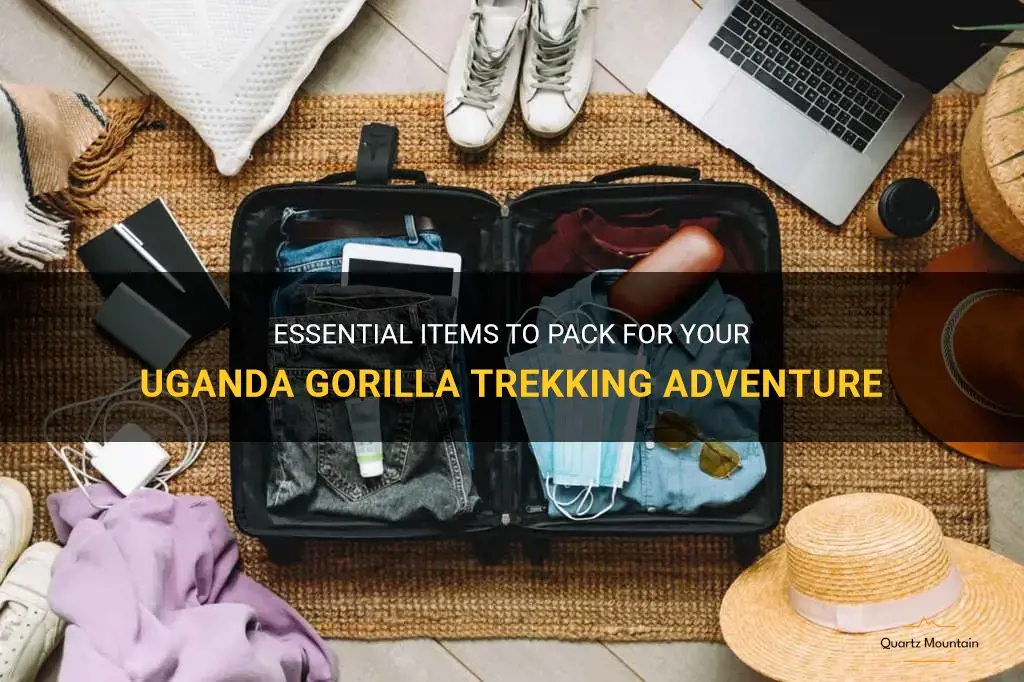
If you're planning a gorilla trekking adventure in Uganda, there are a few essential items you should pack to ensure a successful and enjoyable trip. From proper hiking gear to camera equipment, these items will help you navigate through the lush jungles and capture breathtaking moments with the magnificent mountain gorillas. Whether you're an experienced hiker or a photography enthusiast, having these essential items will enhance your Uganda gorilla trekking experience and make it a truly unforgettable adventure.
| Characteristics | Values |
|---|---|
| Clothing | Long-sleeved shirts, lightweight trousers, waterproof jacket, sweater or fleece, hat, gloves, sturdy hiking boots, socks |
| Equipment | Backpack, binoculars, camera, insect repellent, sunscreen, sunglasses, walking stick |
| Documents | Passport, visa, travel insurance, gorilla trekking permit |
| Medical Supplies | Prescription medications, first aid kit, mosquito repellent, hand sanitizer |
| Other Essentials | Water bottle, snacks, cash, comfortable daypack, comfortable and breathable clothes |
| Miscellaneous Items | Travel adapter, portable charger, power bank, wet wipes, travel pillow, small towel |
What You'll Learn
- What are the essential items to pack for a gorilla trekking trip in Uganda?
- Are there any specific clothing or equipment requirements for gorilla trekking in Uganda?
- Should I bring my own food and water for the trek or will it be provided?
- Are there any restrictions on what can be packed for gorilla trekking, such as prohibited items or weight limits?
- Are there any optional items that are recommended to enhance the experience of gorilla trekking in Uganda?

What are the essential items to pack for a gorilla trekking trip in Uganda?
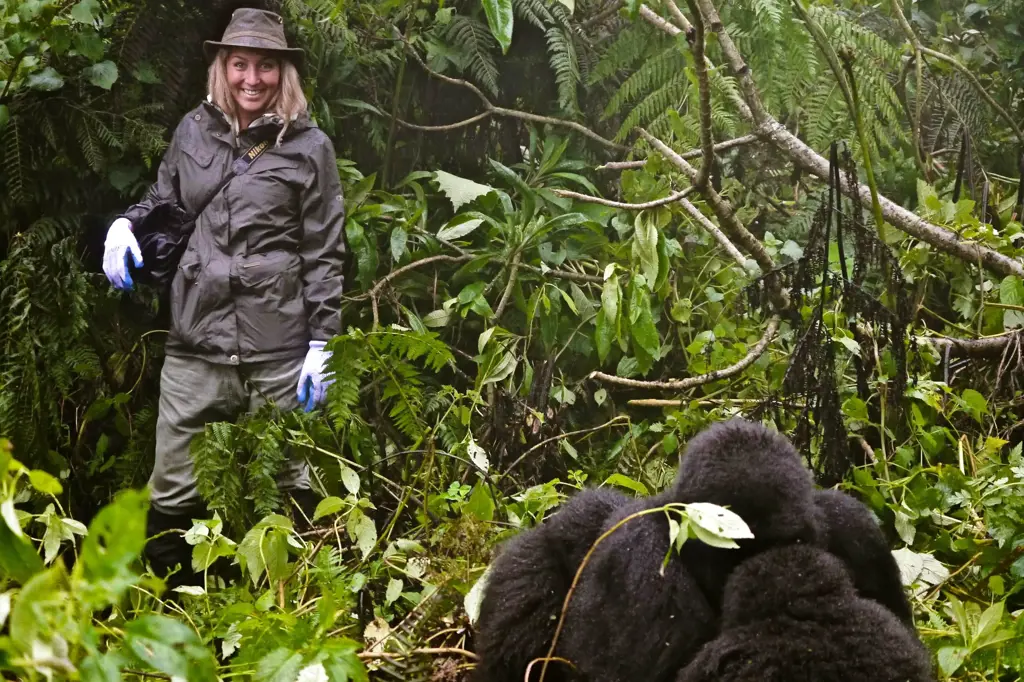
If you're planning a gorilla trekking trip in Uganda, it's important to be prepared and ensure that you have all the essential items packed. Gorilla trekking is a unique and exciting experience, but it can also be physically demanding. Here are some of the essential items you should pack for your gorilla trekking adventure.
- Sturdy Hiking Boots: Gorilla trekking involves walking through rugged and sometimes muddy terrain. It's important to have a good pair of sturdy hiking boots that provide ankle support and have a good grip. This will help you navigate the challenging terrain and prevent any injuries.
- Waterproof Backpack: A waterproof backpack is essential to protect your belongings from rain and mud. It's important to keep your camera, extra batteries, and other electronic devices dry during the trek. Additionally, a backpack with multiple compartments will help you stay organized and easily access your essentials.
- Rain Jacket and Poncho: The weather in the mountains can be unpredictable, and rain is common. It's important to pack a lightweight, waterproof rain jacket and a poncho to keep you dry during the trek. This will ensure that you stay comfortable and can fully enjoy the experience, even in wet conditions.
- Long-sleeved Shirts and Trousers: It's essential to pack long-sleeved shirts and trousers to protect your skin from scratches, insect bites, and sunburn. These clothes will also provide an additional layer of warmth in case the weather turns colder at higher elevations.
- Hat and Sunglasses: Protecting yourself from the sun's rays is crucial during a gorilla trekking trip. A wide-brimmed hat and sunglasses will provide shade and protect your eyes from the bright sunlight. Additionally, a hat will help keep you cool and prevent overheating during the trek.
- Insect Repellent and Sunscreen: In areas where gorillas live, there may be an abundance of insects. It's important to use insect repellent to protect yourself from mosquito bites and other insects. Additionally, applying sunscreen with a high SPF will protect your skin from the sun's harmful rays.
- Snacks and Water: Gorilla trekking can be physically demanding, and it's important to stay hydrated and energized throughout the day. Pack plenty of snacks such as nuts, energy bars, and fruits to keep your energy levels up. It's also important to bring enough water to stay hydrated during the trek.
- Camera and Extra Batteries: Gorilla trekking offers incredible opportunities for wildlife photography. Make sure to pack a good quality camera with a zoom lens to capture the amazing moments during the trek. Additionally, carrying extra batteries and memory cards is essential to ensure that you don't miss out on any photo opportunities.
- Binoculars: Binoculars can enhance your gorilla trekking experience by allowing you to observe the gorillas and other wildlife from a distance. They will also help you spot birds and other interesting creatures that you might encounter along the way.
- First Aid Kit: It's always important to be prepared for any emergencies. Pack a basic first aid kit with essentials such as bandages, antiseptic cream, pain relievers, and any necessary prescription medications. It's also a good idea to carry a small flashlight in case you need it during the trek.
Gorilla trekking is an incredible adventure that requires proper preparation and the right gear. By packing these essential items, you can ensure that you have a comfortable and enjoyable experience while exploring the beautiful mountains of Uganda and encountering these majestic creatures in their natural habitat.
Essential Items to Pack for a Trip to Steamboat Springs
You may want to see also

Are there any specific clothing or equipment requirements for gorilla trekking in Uganda?
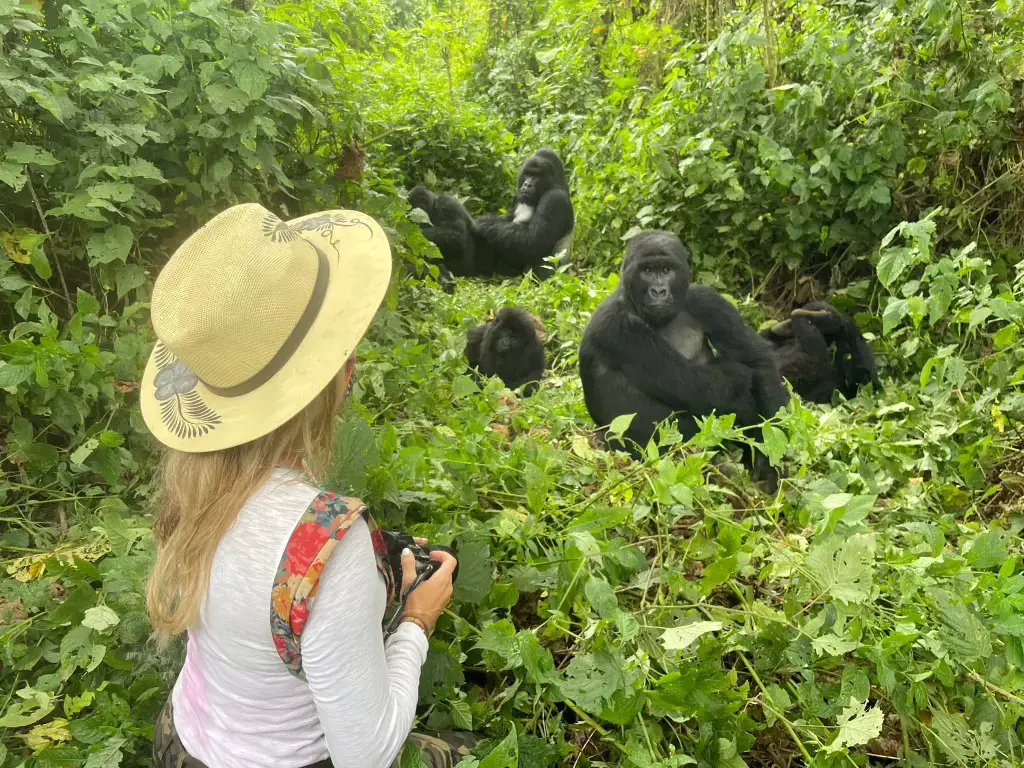
Gorilla trekking in Uganda is a once-in-a-lifetime experience that requires careful planning and preparation. One of the most important aspects to consider before embarking on this adventure is the clothing and equipment you will need. Gorilla trekking can be physically demanding and takes place in dense forests, so it is crucial to be well-prepared to ensure your safety and comfort.
Here are some specific clothing and equipment requirements for gorilla trekking in Uganda:
- Sturdy Hiking Boots: Gorilla trekking involves walking on uneven terrain and through dense vegetation. It is essential to have a pair of sturdy hiking boots with ankle support to protect your feet and ankles from potential injuries. Make sure your boots are broken in before the trek to avoid blisters.
- Long-Sleeved Shirts and Pants: To protect yourself from scratches, insect bites, and sunburn, it is recommended to wear long-sleeved shirts and pants during the trek. Lightweight, breathable, and moisture-wicking fabrics are ideal to keep you comfortable in the humid forest environment.
- Waterproof Jacket or Poncho: Uganda's rainforests are known for their unpredictable weather, so it is necessary to carry a waterproof jacket or poncho to protect yourself from sudden rain showers. Opt for lightweight and packable options that can easily be stored in your backpack.
- Gloves: Thick gloves or gardening gloves will come in handy as you may need to grab onto branches or vegetation for support during the trek. They will also provide protection from thorny plants and insects.
- Daypack: A small daypack is essential for carrying your water bottle, snacks, camera, and other personal items. Look for a backpack with a comfortable shoulder strap and waist belt to distribute the weight evenly and reduce strain on your back during the trek.
- Walking Stick: Many trekking companies provide walking sticks, but it is advisable to bring your own. A walking stick can provide additional support when walking on uneven terrain and help you maintain balance on slippery surfaces.
- Binoculars: While the gorillas will be relatively close, binoculars can enhance your overall wildlife watching experience. They can be useful for observing other wildlife, birds, and distant views during the trek.
- High SPF Sunscreen and Insect Repellent: The sun can be intense in Uganda, even when it is cloudy. Apply a high SPF sunscreen to protect your skin from harmful UV rays. Additionally, use an insect repellent to ward off mosquitoes and other insects.
- Camera with Extra Batteries: Gorilla trekking offers incredible photo opportunities, so you will want to capture every moment. Make sure to bring a camera with extra batteries and memory cards to ensure you don't miss out on any precious shots.
It is important to note that some of these items can be rented or purchased in Uganda, but it is advisable to bring your own to ensure their quality and fit. Additionally, pack lightweight and moisture-wicking clothing to stay comfortable throughout the trek.
In conclusion, gorilla trekking in Uganda requires specific clothing and equipment to ensure your safety and comfort. Sturdy hiking boots, long-sleeved shirts, and pants, waterproof jacket or poncho, gloves, daypack, walking stick, binoculars, high SPF sunscreen, insect repellent, and a camera with extra batteries are among the essential items to consider. By being well-prepared, you can fully enjoy this unique wildlife experience while being protected from the elements of the rainforest.
Essential Items to Pack as a Third Mate: A Comprehensive Guide
You may want to see also

Should I bring my own food and water for the trek or will it be provided?
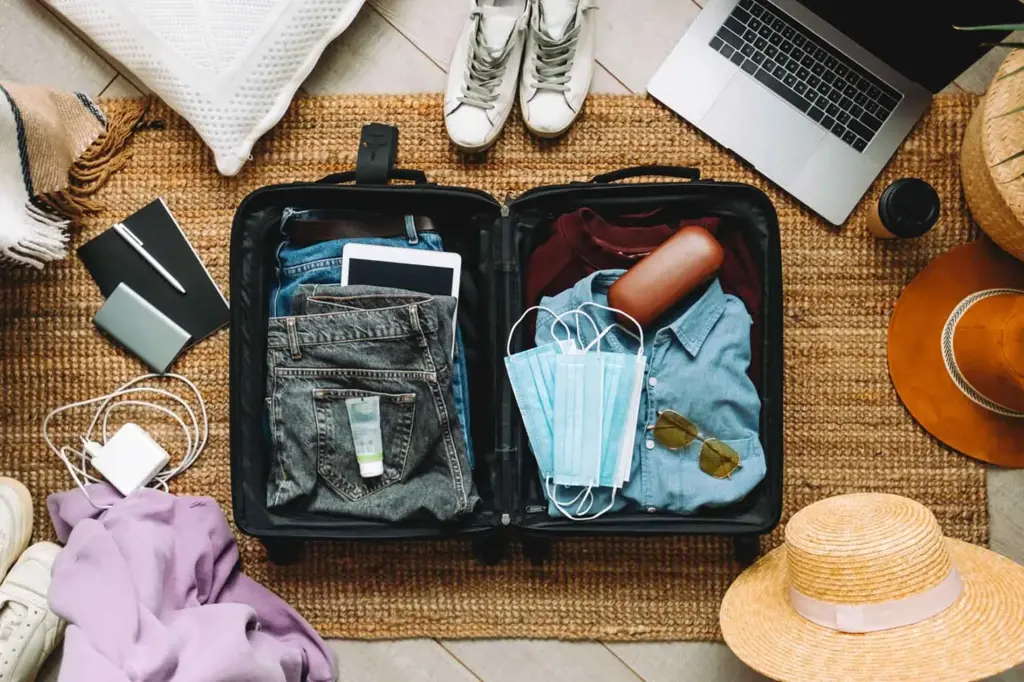
When planning for a trek, one of the common questions that arises is whether or not to bring your own food and water. The answer to this question depends on various factors, including the length of the trek, the location, and the availability of food and water sources along the trek route.
In general, it is always a good idea to bring your own food and water for the trek, even if provisions are provided. This is because you never know when you might need extra sustenance or when the available food and water sources might be inadequate. Moreover, bringing your own food and water ensures that you have control over the quality and quantity of your provisions.
The length of the trek is an important factor to consider when deciding whether to bring your own food and water. Short treks that last a few hours or a day may have food and water available at nearby facilities or restaurants. In such cases, it may be convenient to rely on the available provisions rather than carrying your own. However, it is still a good idea to have some snacks and a water bottle with you for emergencies or unexpected delays.
On the other hand, long treks that span several days or weeks usually require carrying your own food and water. In such cases, it is essential to plan your meals and hydration carefully to ensure that you have enough to sustain yourself throughout the trek. Research the trek route beforehand to find out if there are any reliable sources of potable water along the way. If not, you will need to carry enough water to last for the entire duration of the trek.
When deciding on the food and snacks to bring, opt for lightweight, compact, and nutritious items that do not spoil easily. Some good choices include energy bars, trail mix, dried fruit, nuts, and instant meals that require minimal cooking. Consider the calorie content and nutritional value of the food to ensure that you have enough sustenance for the physical exertion involved in trekking.
It is also important to pack your food and water in appropriate containers. Use leak-proof water bottles that are easy to carry and refill. Consider using a water filtration device or water purification tablets to ensure the safety of the water you collect from natural sources.
Bringing your own food and water also allows you to cater to any specific dietary needs or preferences you may have. If you have any food allergies or restrictions, it may be difficult to find suitable meals along the trek route. Having your own provisions ensures that you have access to food that meets your dietary requirements.
In conclusion, it is generally recommended to bring your own food and water for a trek, regardless of whether provisions are provided. This ensures that you have sufficient sustenance, allows for flexibility in case of unforeseen circumstances, and enables you to cater to your dietary needs. However, always research the trek route and assess the availability of food and water sources before making a final decision.
Top Tips for Surviving in the Wilderness: What You Need to Do
You may want to see also

Are there any restrictions on what can be packed for gorilla trekking, such as prohibited items or weight limits?
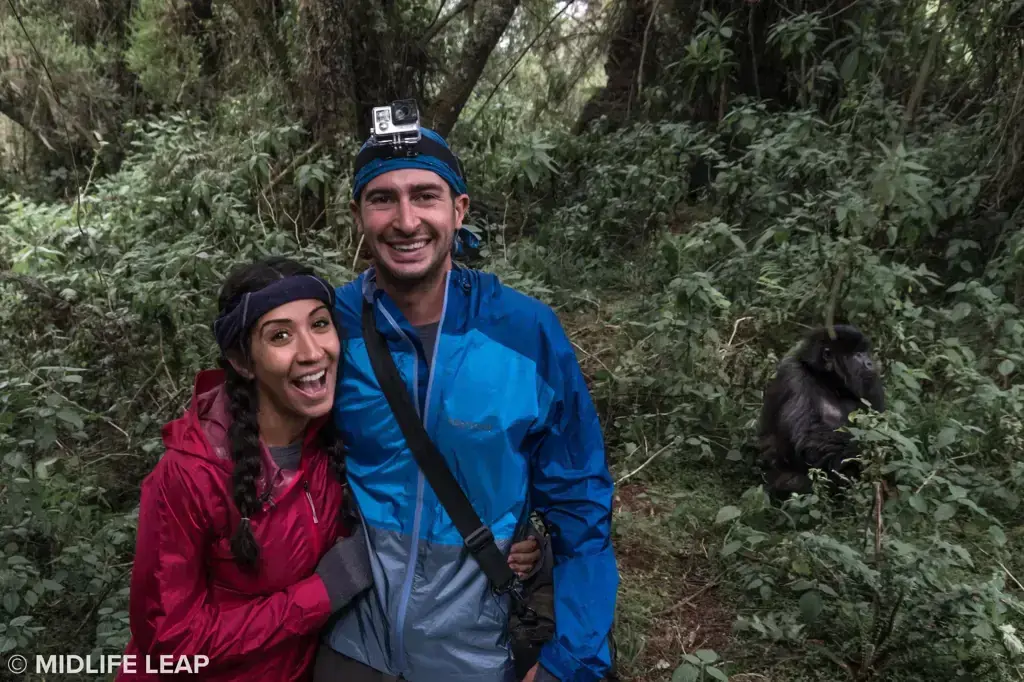
When preparing for a gorilla trekking adventure, it's important to pack the right items to ensure a comfortable and successful journey. There are certain restrictions and guidelines when it comes to what can be packed for gorilla trekking, including prohibited items and weight limits. These restrictions are in place to protect both the gorillas and the natural environment.
Prohibited items:
- Food: It is strictly prohibited to bring any food or snacks on a gorilla trekking expedition. This is done to prevent wildlife from becoming habituated to human food and to reduce the risk of transmitting diseases to the gorillas. Gorillas have very specific diets consisting of vegetation, so it's important to respect their natural feeding habits.
- Disposable plastics: To minimize waste and protect the environment, it is advised to avoid bringing any disposable plastic items, such as water bottles or food containers. Instead, opt for reusable alternatives like stainless steel water bottles and containers.
- Weapons: It goes without saying, but any kind of weapons, including firearms and knives, are strictly prohibited on gorilla treks. The goal is to keep both the gorillas and the visitors safe, so it's important to adhere to these rules.
Weight limits:
While there is no specific weight limit for gorilla trekking, it's important to pack lightly and efficiently. The trek can be physically demanding, with steep and muddy terrain, so carrying heavy backpacks can hinder your progress and make the experience more challenging. It is advised to limit your pack to essential items such as a waterproof jacket, insect repellent, sunscreen, a camera, spare batteries, and comfortable trekking shoes.
In addition to the prohibited items and weight limits, it's also important to consider the climate and seasons when packing for a gorilla trek. Depending on the location and time of year, the weather can vary greatly, so it's essential to pack appropriate clothing. Layered clothing is recommended to accommodate changing temperatures and weather conditions. It's also important to bring a good pair of waterproof boots or shoes, as the terrain can be wet and muddy.
Furthermore, it's worth noting that porters are usually available to assist you during the trek. These porters can carry your heavy backpacks, allowing you to enjoy the experience without the burden of extra weight. It's a good idea to hire a porter to help lighten your load and support the local community at the same time.
In conclusion, when packing for a gorilla trekking adventure, it's important to adhere to the restrictions on prohibited items and consider the weight limits to ensure a safe and enjoyable experience. By packing smartly and respecting the rules, you can have an incredible journey while protecting the gorillas and their natural habitat.
Essential Items to Pack for Your First Time Flying
You may want to see also

Are there any optional items that are recommended to enhance the experience of gorilla trekking in Uganda?
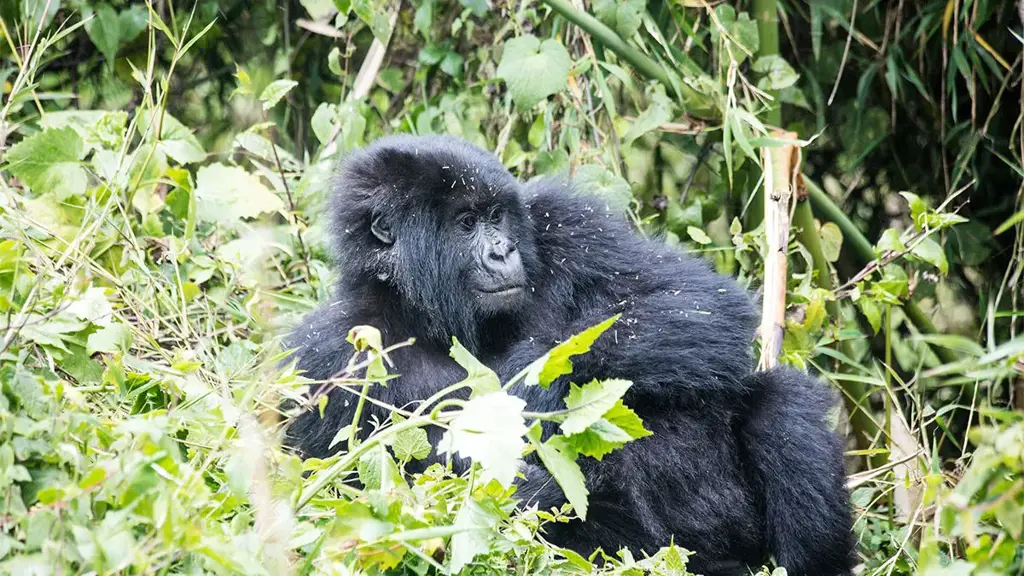
Gorilla trekking in Uganda is an unforgettable experience that allows visitors to get up close and personal with these magnificent creatures in their natural habitat. While the main focus is on the gorilla encounter itself, there are a few optional items that are recommended to enhance the overall experience. These items can make your trekking experience more comfortable and enjoyable, and help you make the most of your time in the jungle.
One of the most important items to have during a gorilla trekking expedition is a good pair of hiking boots. The trek to reach the gorillas can be quite challenging, with steep and muddy terrain, dense vegetation, and potentially slippery surfaces. Having a sturdy pair of boots with good ankle support will not only make the trek safer but also more enjoyable. Additionally, wearing long pants and a long-sleeved shirt will protect you from thorny bushes and insect bites.
Another recommended item to bring along is a lightweight, waterproof jacket or poncho. The weather in the rainforest can be unpredictable, and sudden rain showers are not uncommon. Having a waterproof layer will help keep you dry and comfortable during the trek. It is also important to bring a hat and sunscreen to protect yourself from the strong sun rays that can filter through the dense canopy.
To enhance your gorilla trekking experience, it is highly recommended to bring a good pair of binoculars. These will allow you to observe the gorillas from a distance and appreciate their behavior in more detail. Binoculars can be particularly useful when the gorillas are high up in the trees or moving around in the brush.
Additionally, packing a camera with a telephoto lens is a must for capturing the mesmerizing moments during the encounter. Make sure to have extra batteries and memory cards to avoid running out of storage or power. Keep in mind that flash photography is not allowed during gorilla trekking, as it can disturb the animals.
It is also a good idea to pack a small daypack with essentials such as a refillable water bottle, energy snacks, a first aid kit, insect repellent, and a small towel or handkerchief. These items will come in handy during the trek and allow you to stay hydrated and comfortable along the way.
Lastly, it is crucial to bring a respectful and responsible attitude towards the gorillas and their habitat. Follow the instructions provided by your guides and keep a safe distance from the animals. Remember to avoid direct eye contact, speak softly, and move slowly in order not to alarm the gorillas.
In conclusion, while the main focus of gorilla trekking in Uganda is encountering these magnificent creatures, there are a few optional items that can greatly enhance the overall experience. These include good hiking boots, waterproof clothing, binoculars, a camera with a telephoto lens, a small daypack with essentials, and a respectful attitude towards the gorillas. By being prepared and having these items on hand, you will be able to fully immerse yourself in the magic of gorilla trekking and create lasting memories of this unique wildlife encounter.
Essential Items to Pack for Your Travel to Guatemala
You may want to see also
Frequently asked questions
When packing for gorilla trekking in Uganda, it is important to pack lightweight and breathable clothing, as the temperatures can vary throughout the day. It is recommended to pack long-sleeved shirts, long pants, and a light jacket or sweater for cooler evenings. It is also important to pack sturdy and comfortable trekking shoes or boots, as you will be hiking through uneven terrain. Additionally, don't forget to pack insect repellent, sunscreen, a hat, and a camera to capture your incredible experience.
Yes, there are a few specific items you should definitely pack for the gorilla trek in Uganda. One essential item is a good-quality backpack or daypack to carry your water, snacks, and any personal belongings. It is also important to pack a raincoat or poncho, as rain showers can occur unexpectedly in the rainforest. Another item to consider packing is a pair of gaiters, which can protect your legs and boots from any thorny vegetation or ants along the trek. Finally, don't forget to pack a pair of binoculars to enhance your wildlife-viewing experience.
Yes, there are certain restrictions on what you can bring for gorilla trekking in Uganda. It is important to note that you are not allowed to bring any food or drinks into the gorilla habitat, as this can attract unwanted attention from the gorillas. Additionally, you should avoid bringing any loud or bright-colored clothing or accessories, as these can potentially startle or disturb the gorillas. It is also prohibited to bring any weapons or illegal substances to the gorilla trek.
In addition to the essential items mentioned earlier, there are a few other things you should consider packing for gorilla trekking in Uganda. It is recommended to pack a good-quality water bottle or hydration pack to ensure you stay hydrated throughout the trek. You should also pack a small first aid kit, including any necessary prescription medications, as well as any over-the-counter medications you may need. Finally, it is always a good idea to bring a sturdy and waterproof backpack cover or dry bag to protect your belongings from moisture during the trek.







